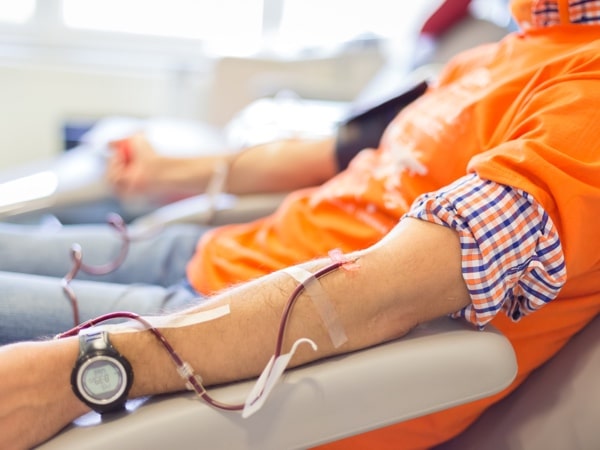The NHS faces a new balancing act in the signals it sends to blood donors. On the one hand it needs volunteers to keep coming forward because it takes 200,000 new people a year to replace those who drop out of the blood donation system.

But the amount of blood that is actually needed is falling because of improved clinical practices such as keyhole surgery, and the financial strains on the NHS have led to a review to find ways to collect blood more cheaply.
One solution has been to move some collection sessions from smaller venues to places that can accommodate more donors at once.
That means that in recent weeks donors in Cornwall, Devon, Lancashire and elsewhere have been told that their local church hall or community centre will no longer be collecting blood, and not everybody can make the extra journey to the closest alternative collection point.
Falling Demand
Mike Stredder, the director of blood donation at NHS Blood and Transplant says the amount of blood used in hospitals is declining by 3-4% a year. “This means that sometimes we need to consider reducing the amount of blood donation sessions that we hold,” he said. “It’s important that we do not waste precious donations by collecting too much blood.”
The danger is that potential donors may get the impression that they are no longer needed. ‘While hospitals are using less blood than in previous years, we still need to collect 1.5 million units of blood a year,” said Stredder.
The challenge for the NHS is to more closely match the types and volumes of blood collected with patient needs. There is a particular need for donors from O negative (the universal blood group), A negative and B negative to donate regularly as stocks of those blood groups are more vulnerable to shortfalls.
The NHS also needs more black and south Asian people to become blood donors to reflect the ethnic diversity of patients. Appointments are the best way to donate blood. Clinics prioritise these over walk-ins so you might get turned away or kept waiting if you randomly turn up. Go to www.blood.co.uk to sign up and schedule a donation. Each session should take less than an hour of your time.
The Donation
 Before you go drink some water and try to eat iron-rich foods. You’ll fill out a medical form on arrival then have a finger-prick test where your blood is dropped into a solution to see if it sinks. If it doesn’t you might be anaemic and they’ll send you away with some health advice.
Before you go drink some water and try to eat iron-rich foods. You’ll fill out a medical form on arrival then have a finger-prick test where your blood is dropped into a solution to see if it sinks. If it doesn’t you might be anaemic and they’ll send you away with some health advice.
If you have a genuine needle phobia it’s best to stay away but there’s no need to worry – you will only feel a short sharp scratch.
A nurse will take samples to find out your group and test for any blood-borne diseases. Giving blood regularly doesn’t just give you a free check up – it also helps thin your blood and reduces iron build-up, decreasing your risk of heart attack and stroke. A study from the University of California found that making a blood donation also burns 650 calories.
Who can donate?
To start giving blood you need to be aged 17-66. Men must wait three months between donations and women four months. You may be ineligible to give for a number of reasons so check the NHS website first.
Blood is divided by group (A, B, AB and O) and rhesus (positive or negative). Each blood type carries different properties meaning that some can’t interact. Only O negative blood is safe for everyone to receive so it’s used in emergencies when someone’s blood type is unknown. Only 7% of the population are O negative but their blood powers A&Es across the country.
Safety tests take time and blood needs to be separated into platelets, blood cells and plasma. Platelets are vital – they clot and stem blood loss – but can only be stored for seven days so they need constant restocking. Blood takes 2-3 weeks to reach a patient so hospitals stockpile in case of emergency.
Sign up, book an appointment and become a blood donor today.
by Peter Wilson
The post NHS: Surprise Changes to Blood Donation appeared first on Felix Magazine.
No comments:
Post a Comment